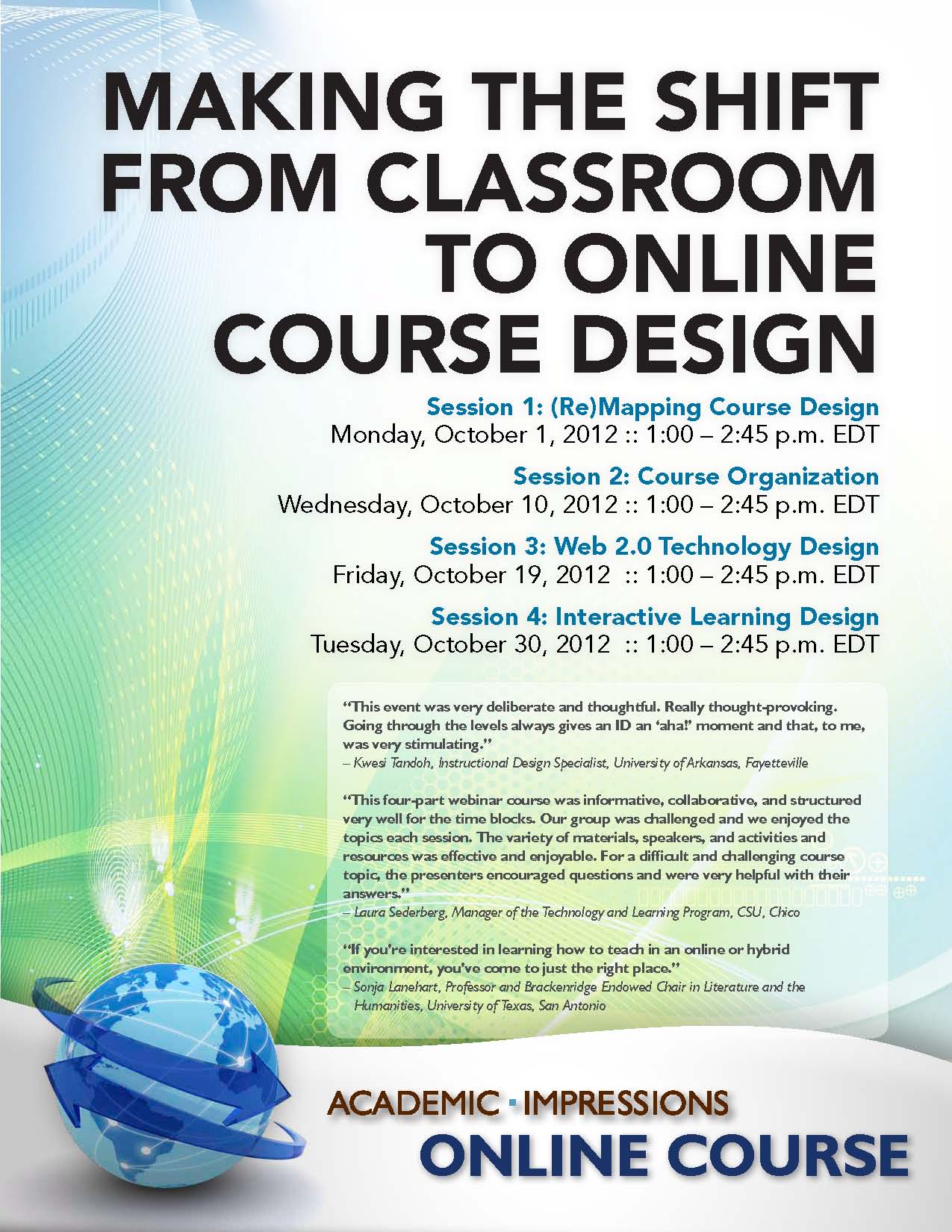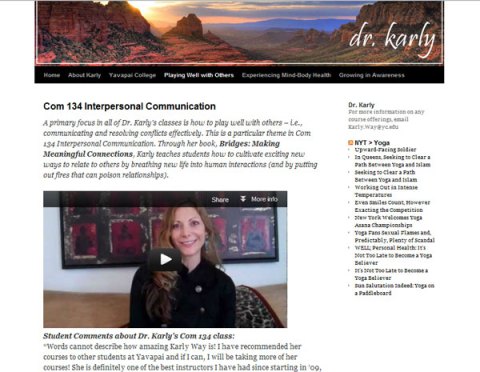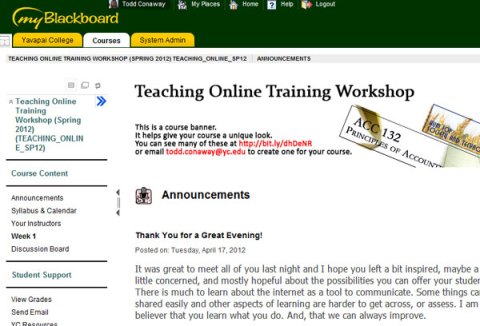Tomorrow's Teaching and Learning
Learning Theory and Online Instruction
A basic understanding of learning theory is an important foundation to teaching. Learning is a complex process involving mental processes that are influenced by emotional and environment factors that can support or hinder learning. Learning theories have evolved that take into consideration these complex factors in an effort to explain how learning occurs and prescribe instructional strategies to facilitate learning. If instructional strategies are not grounded in understanding of how learning occurs, they are unproductive and do little to affect learner persistence. In addition, there is an opportunity to maximize retention and transfer by linking basic research about the process of learning with instructional strategies (Tennyson & Schott, 1997). This approach is important to help learners use the skills and knowledge gained through educational experiences in the real world.
In this chapter, we look at the psychological foundations of learning, including behaviorism, cognitivism, and constructivism, to understand how each of these learning theories contributes to our understanding of learning and the instructional strategies we use in teaching.
Behaviorism
Learning in the 1950s and 1960s was based on behaviorist learning theories. Behaviorism is grounded in the study of observable behavior and does not take into consideration the functions of the mind. When behaviorism was introduced, the mind was considered a black box that could not be accessed. According to behaviorism, knowledge exists outside of a person and is gained through behavior modification. The theory views learning as a change in behavior that can be conditioned using positive and negative reinforcements such as reward and punishment. There are two types of conditioning associated with behaviorism: Ivan Pavlov's classical conditioning and B. F. Skinner's operant conditioning. Pavlov used animals to discover the principles of learning based on natural reflexes that respond to stimuli. Most prominent was Pavlov's work with dogs to teach them to salivate to the sound of a bell. In his experiments, he demonstrated classical conditioning, in which an association is created between two stimuli (Pavlov, 1927). Skinner's operant conditioning experiments conditioned rats and pigeons to press or peck a lever to obtain pellets of food in an apparatus known as a Skinner Box. The experiments were based on the theory that organisms emit responses, which are gradually shaped by consequences. If a response has a reward, it is more likely to occur again and if it does not, it is less likely to occur. Skinner's operant conditioning demonstrated that associations are formed between a behavior and a consequence (Skinner, 1938).
Based on these types of experiments with animals, behaviorists proposed that learning is influenced by associations between behaviors and consequences. Behavior is conditioned by the instructor through rewards or punishment to attain the desired learning outcomes. According to behaviorists, the types of reinforcement are a critical component to learning because individual learners respond to different reinforcement based on their personal motivations. For instance, if the learner is motivated by good grades, a great reinforcement is the use of grades. Poor grades are a negative reinforcement, which provides motivation for the learner to put in more effort in order to receive a better grade.
According to Moore (as cited in Tennyson & Schott, 1997), the goal from the behaviorist perspective was the development of instruction that would enable the majority of students to achieve levels of performance predetermined by behaviorally defined objectives. Learning that involves recalling facts, defining concepts and explanations, or performing procedures are best explained by behaviorist learning strategies, which focus on attainment of specific goals or outcomes. In behaviorist theory, learners are more passive in the learning process. The learners' role is simply to respond to the learning content and demonstrate a level of performance on specific goals and objectives. Pedagogy based on behaviorism focuses on the ability to modify observable behavior to acquire knowledge or skills. The operant model of stimulus-response-reinforcenment ensures that prescribed learning outcomes are achieved. In this model, the instructor provides learners with information about the appropriateness of the behavior through frequent feedback. This feedback either reinforces learners' behavior or determines consequences in the form of corrective actions for the learner to achieve the desired performance behavior. This requires continuous monitoring and feedback from the instructor.
According to the behaviorist view of learning, objectives should be developed that focus on the level of learning desired, as well as the type of task. Behaviorists focus on "identifying small, incremental tasks, or sub skills that the learner needed to acquire for successful completion of instruction, designing specific objectives that would lead to the acquisition of those sub skills, and sequencing sub skill acquisition in the order that would most efficiently lead to successful learner outcomes" (Tennyson& Schott, 1997, p. 5).
Cognitivism
In the late 1960s and 1970s psychology moved from the study of behavior to the study of the mind, and cognitivism emerged as a new theory of how learning occurs. According to cognitivism, knowledge is still considered to exist outside of the person; however, its focus is on understanding how human memory works to acquire knowledge and promote learning. The theory's foundation is information processes and understanding the memory structures of the mind for knowledge acquisition. In addition, the theory establishes conditions of learning and strategies to incorporate individual differences into the design of instruction, including the use of pretests and more formative assessment strategies. In cognitivism, task analysis shifts from behavioral objectives to performance; the different stages of performance extend from novice to expert (Tennyson & Schott, 1997).
The environment continues to have the greatest impact on learning; however, there is more focus on how learners acquire specific types of strategies for learning, including planning, monitoring, and evaluating, and the influence of prior knowledge, beliefs, attitudes, and values on learning (Tennyson & Schott, 1997). This theory developed a clearer understanding of how information is processed and stored, as well as how prior knowledge is stored in memory structures called schema for retrieval in an appropriate context. According to cognitivism, the transfer of knowledge to new situations is influenced by how information is presented and the relevance of the information. If information is presented poorly or too much irrelevant information is associated with relevant information, the learner may have difficulty sorting and organizing the information. This difficulty, in turn, can have an impact on storage, retrieval, and transfer?functions that are critical to adult learners
who have specific professional needs that require them to be able to transfer knowledge to real-world applications in their professional environments.
Learning outcomes that are focused on complex higher levels of learning such as problem solving are best explained by cognitivism because the focus is on breaking down complex problems into component parts and relating the content to be learned with prior knowledge to braid higher levels of understanding. Instructional strategies based on cognitive theory consider the organization of content for learning and focus on information processing, including organization, retrieval, and application.
David Ausubel (1960) developed the concept of the advance organizer (information that is presented prior to learning) and researched how use of advance organizers can scaffold the learning of new information. Advance organizers stimulate schema to help learners link prior knowledge with new information. An example of an advance organizer is a summary of the main ideas in a reading passage and explanations of content at a "higher level of abstraction, generality, and inclusiveness than the reading itself" (Ausubel, 1963, p. 81).
Robert Gagne (1985) proposed nine events of learning that correspond with specific cognitive processes. Gagne's nine events are a systematic organizational process for learning and include the following:
- Gaining the learners' attention
- Informing them of the learning objectives
- Stimulating recall of prior learning
- Presenting stimulus in the form of content to be learned
- Providing guidance
- Eliciting performance through instructional activities
- Providing feedback
- Assessing performance
- Enhancing retention and transfer
Gagne proposed that these nine events provide the conditions of learning and define the intellectual skills to be learned, as well as the sequence of instruction. He believed lessons should be organized according to these events so learners could associate new knowledge with existing structures. He also thought the nine events could provide the appropriate level of scaffolding to support learning.
According to cognitivism, learners play a more active role in learning by actively organizing the learning process. The emphasis of cognitivism is on helping learners organize information for successful processing into long-term memory and recall. Cognitive strategies focus on internal learning and thinking processes, including "problem solving, organizing information, reducing anxiety, developing self-monitoring skills, and enhancing positive attitudes" (Tennyson & Schott, 1997, p. 8). The instructor continues to determine learning outcomes and direct the learning with the additional application of specific information-processing strategies to assist the learner in acquiring knowledge. To facilitate learning, cognitivism postulates that the learning environment should be arranged to maximize learners' ability to retrieve prior knowledge relevant to the learning outcomes and organize the content to maximize information processing. Instructors should provide the appropriate context for learners to draw on prior knowledge and fit new information into existing schema. For learners with little prior knowledge, instructors need to provide opportunities to create new schema by relating the new information to something that is familiar to them.
Constructivism
Constructivism became popular in the 1980s. It describes learning as a process in which learners construct knowledge and meaning by integrating prior knowledge, beliefs, and experiences. According to this theory, knowledge does not exist outside of the person but is constructed based on how a person interacts with the environment and experiences the world (Tennyson & Schott, 1997). Control of the environment is not a focus of the constructivist theory of learning. Instead, it emphasizes the synthesis and integration of knowledge and skills into an individual's experiences. This theory addresses some of the limitations of other learning theories that emphasize components instead of integrated wholes.
There are two types of constructivism: cognitive constructivism and social constructivism. Cognitive constructivism focuses on the individual characteristics or attributes of the learner and their impact on learning. Social constructivism focuses on how meaning and understanding are created through social interaction. Together, they view knowledge acquisition as a means of interpreting incoming information through an individual's unique lens, which includes his or her personality, beliefs, culture, and experiences. Based on interpretations, knowledge has meaning and learners build schema to represent what they know.
Jean Piaget's (1985) theory of cognitive constructivism proposed that knowledge cannot be simply transmitted to a person but must be constructed through experience. Experiences allow individuals to construct mental models or schemas, and knowledge construction is based on a change in schema through assimilation and accommodation. If the incoming information can be associated with existing information, assimilation of the incoming information into the already formed schemas occurs and equilibrium is maintained. If the incoming information conflicts with current thinking, cognitive dissonance occurs; this is an uncomfortable feeling that stems from holding conflicting ideas at the same time. Cognitive dissonance requires a change in existing schemas to accommodate incoming information. In addition, Piaget believed that learning is based on interaction with the environment around us, so real-world practice is important.
Social constructivism emphasizes the social nature of learning. Lev Vygotsky (1978) proposed that learning could not be separated from the social context in which it occurs, nor could accommodation and assimilation occur without the active integration of the learner in a community of practice. He saw learning as a collaborative process, and he developed a theory called the zone of proximal development (ZPD) to explain the collaborative nature of learning (Vygotsky, 1978). This theory distinguishes between two levels of development. One is the level of development that a learner can reach independently. The second is the potential level of development a learner can achieve with the support of an instructor or peers. This theory argues that with help from an instructor or peers, learners can understand concepts and ideas that they cannot understand on their own. It supports an instructional strategy of providing learners just enough scaffolding or support to help them reach the next level of understanding. This scaffolding in turn allows learners to work independently until they no longer can learn without support. Instruction again is supported through the instructor or peers, and the learner continues to reach higher levels of understanding through their guidance.
According to constructivism, memory is continuously under construction as a person interacts with incoming information in unique contexts that require them to draw upon prior knowledge from different sources. Either accommodation or assimilation of new information into existing schemas occurs, which builds deeper levels of understanding and meaning. Transfer involves the use of meaningful contexts that allow the learning to be transferred to a novel situation and applied. Real-world examples, as well as opportunities to solve real-world problems, allow for the greatest opportunity for transfer.
Constructivist theories do not categorize learning into types but hold that all learning is context dependent. One of the problems with constructivist learning theories is the assumption that all learners come to the learning situation with prior knowledge and that the goal of learning is to activate prior knowledge and build additional understanding and meaning. Learners who are new to a field of study may not have prior knowledge, so building instructional strategies that require them to draw on prior knowledge and deal with ill-structured problems can be frustrating and overwhelming. For learners who do not have prior knowledge and experience, there are cognitive strategies such as the use of advance organizers and conceptual scaffolds that can be used to replace the lack of prior knowledge and experience. These strategies are addressed in more detail in Chapter 9.
From the constructivist perspective, learners are not merely passive receivers of knowledge, they are active participants in the learning process and knowledge construction. Instruction should situate the learning in authentic tasks that allow learners to understand why it is important to learn, as well as its relevance to them personally or professionally. Instructors who base their pedagogy on constructivism take on a new role of facilitator rather than lecturer by actively observing and assessing the current state of individual learners and providing learning strategies to help them interpret and understand the content. The facilitation role includes providing relevant context for learners who may not have prior knowledge and experience with the subject to help them organize the content into relevant schemas for acquiring knowledge. The instructor must develop skill in assessing the current state of learners and adapt the learning experience to support their attainment of
goals. The instructor must also have an understanding of individual learning styles to provide effective strategies to help learners plan, monitor, and evaluate their thinking during learning.
References
Ausubel. D. P. (1960). The use of advance organizers in the learning and retention of meaningful verbal material. Journal of Educational Psychology, 51, 267-272.
Ausubel, D. P. (1963). The psychology of meaningful verbal learning. New York: Grune & Stratton.
Gagne, R. (1985). The conditions of learning (4th ed.). New York: Holt, Rinehart & Winston.
Pavlov, I. P. (1927). Conditioned reflexes: An investigation of the physiological activity of the cerebral cortex (G.V. Anrep, trans.). London: Oxford University Press.
Piaget, J. (1985). The equilibration of cognitive structures. Chicago: University of Chicago Press.
Skinner, B. F. (1938). The behavior of organisms. New York: Appleton-Century-Crofts.
Tennyson, R. D. & Schott, F. (1997). Instructional design theory research and models. In R. D. Tennyson, F. Schott, N. Seel, & S. Dijkstra. Instructional design: International perspective. Vol. 1, Theory, research, and models. Mahwah, NJ: Erlbaum.
Vygotsky, L. S. (1978). Mind in society. Cambridge, MA: Harvard University Press.




















